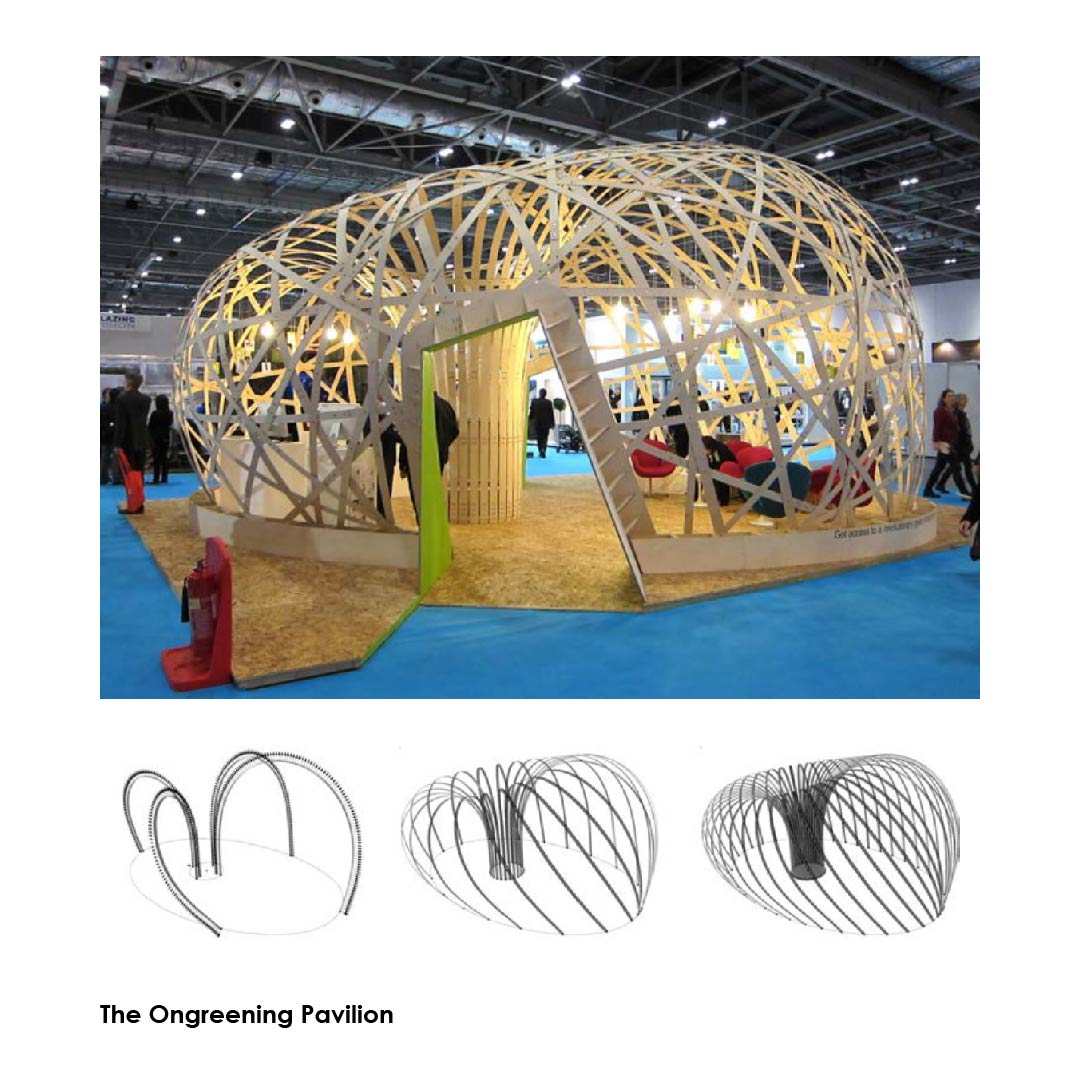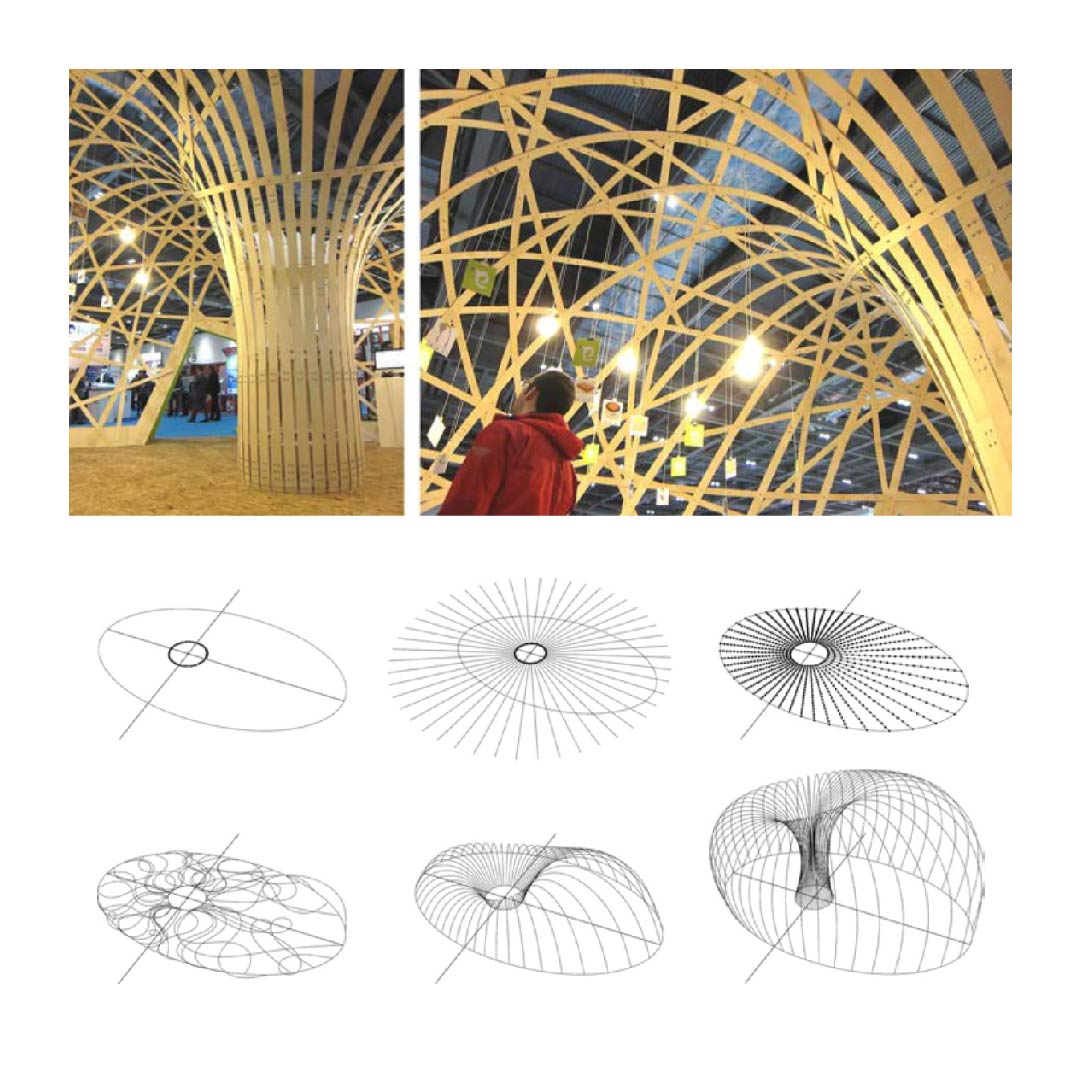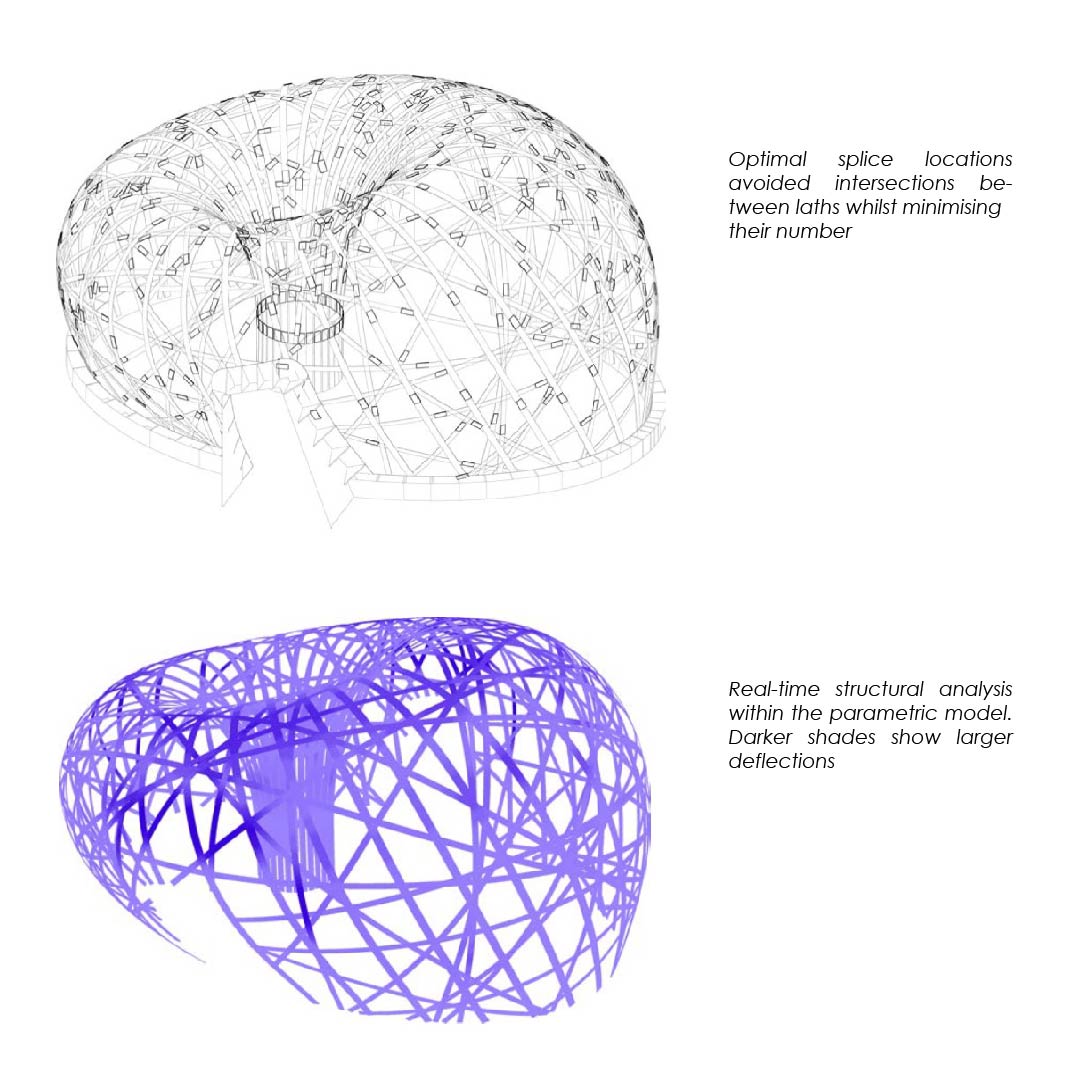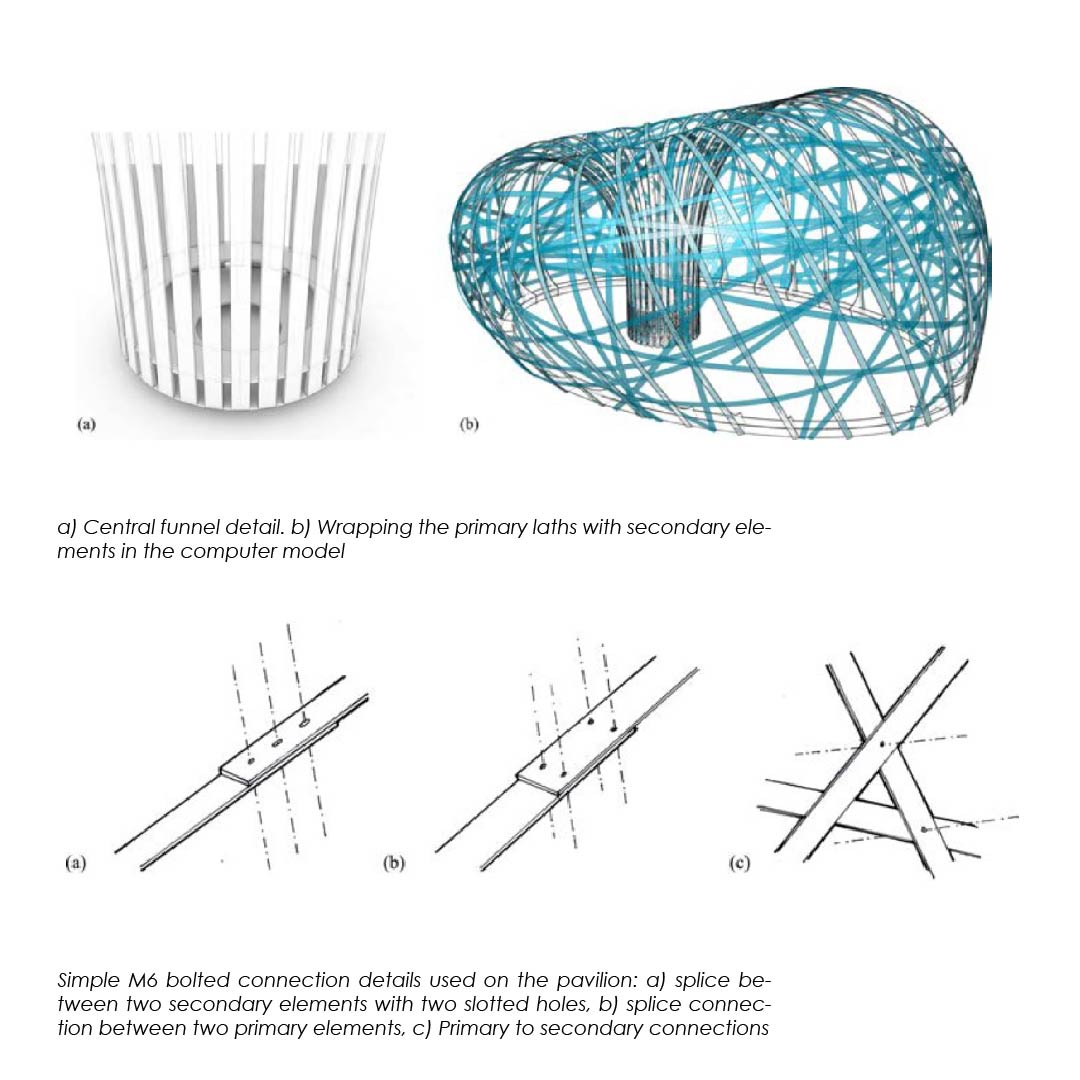The Ongreening Pavilion
The Ongreening Pavilion
John Harding1, Will Pearson1, Harri Lewis2, Stephen Melville3
1University of Bath and Ramboll UK
2Foster and Partners
3Ramboll UK
This paper describes the work of Ramboll Computational Design during the design and construction of the Ongreening Pavilion timber gridshell.
The structural approach involved form-finding bending-active timber laths, connected at intersections to form a doubly curved shell.
 The resulting form was simple to fabricate and assemble, realised using 6.5mm thick Finnish birch plywood laths that could achieve high curvature while maintaining desired strength.
The resulting form was simple to fabricate and assemble, realised using 6.5mm thick Finnish birch plywood laths that could achieve high curvature while maintaining desired strength.
Due to the random nature of the final lath topology, the resulting structure was extremely stiff in spite of its low material weight, acting similarly to a continuous monocoque. The fully demountable shell was first erected at Ecobuild 2014 in London.
 Bending active gridshells often have a rotationally symmetry cross-section, so that any torsion in the member does not effect the orientation of the connection details at member intersections.
Bending active gridshells often have a rotationally symmetry cross-section, so that any torsion in the member does not effect the orientation of the connection details at member intersections.
For example, the Faraday Pavilion was constructed using fibre reinforced polymer tubes. For The Ongreeening Pavilion however, flat timber laths were proposed with a particular grain direction, thus adding an additional design constraint.
 In theory, any doubly curved shape can be discretised into flat, straight laths so long as their paths follow surface geodesics [Pirazzi et al. 2006].
In theory, any doubly curved shape can be discretised into flat, straight laths so long as their paths follow surface geodesics [Pirazzi et al. 2006].
However, during the process of construction it is advantageous for each lath to take its required shape using a minimal amount of effort.
 Numerical form-finding techniques for large displacements were required to understand the equilibrium of bending-active shapes.
Numerical form-finding techniques for large displacements were required to understand the equilibrium of bending-active shapes.
A simple dynamic relaxation process using Euler integration was carried out using within Grasshopper with the Kangaroo physics plug-in [Piker 2013].




























Comments